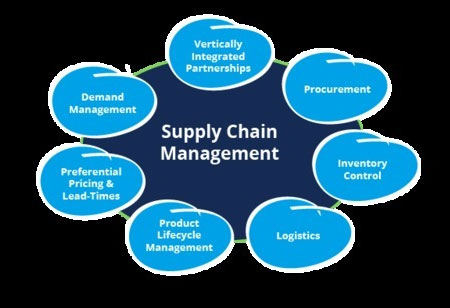THANK YOU FOR SUBSCRIBING
Six Supply Chain Trends Influencing Manufacturing in 2018
The technologies adopted by manufacturers that are making manufacturing "smart" are the Internet of Things (IoT), robotics, automation, and big data. The same technologies are also transforming SCM.

By
Apac CIOOutlook | Thursday, January 01, 1970
Stay ahead of the industry with exclusive feature stories on the top companies, expert insights and the latest news delivered straight to your inbox. Subscribe today.
Digitalization is revolutionizing Supply Chain Management (SCM). To improve productivity and real-time visibility, manufacturers and their supply chain vendors, distributors and retailers are moving to digital technologies. The technologies adopted by manufacturers that are making manufacturing "smart" are the Internet of Things (IoT), robotics, automation, and big data.
The same technologies are also transforming supply chain management and all set to revolutionize SCM with both operational efficiencies and revenue opportunities.
Below are the six key trends in Supply chain influencing Manufacturing innovation:
1) Cloud
Over the past 5 years, manufacturers are moving over to the cloud at a quick pace. As per International Data Corporation (IDC), 80 percent of SCM activities will happen across cloud-based commerce networks by 2020. The cloud is important for a few things like supply chain projections, maximizing data analytics and to connect with suppliers.
2) Forecasting and inventory
Imagine being able to track inventory at a click of the button. Through the Internet of Things sensor technologies, tracking inventory is far more quick and accurate. Amazon uses Wi-Fi robots to scan quick response codes on its products to track its orders. Putting this technology to use, manufacturers will never miss a deadline and effective data can be used to find trends and make schedules more efficient.
3) Autonomous Vehicles
Supply Chain environment is getting influenced by automation, sensor technologies, and IoT. The operations are made efficient, cost reducing and safer. Multiple autonomous vehicles are introduced over the last few years and several companies are testing the use of an autonomous vehicle, especially in the warehouse settings. After all the testing, 2018 could be the year when the feasibility of the driverless vehicles will be uncovered.
4) Monitoring Assets
Soon racking numbers and barcodes will be obsolete for managing goods. Radio Frequency Identification (RIFD) and Global Positioning System (GPS) have the capability of tracking products from the floor to the store. These sensors provide much more granular data like the temperature at which the item was stored, time spent in cargo and how fast it was sold. This data helps companies in quality control, product forecasting and on-time deliveries.
5) Blockchain
The blockchain is a digital master ledger that is used to exchange information and maintain the history of transactions. This technology will be soon replacing inefficient systems like faxes, paper documents, emails, and phone calls. Approximately one-third of the manufacturers and retailers will be using blockchain in the next three years.
Maersk and IBM are working together to launch a blockchain-based electronic shipping system that will replace all the old, slow and error-prone systems which will be able to track international cargo in real time. It will save the global shipping industry billions of dollars per year.
6) Robotics
50 percent of fulfillment centers will be using robots by 2019, as per IDC. Robots will increase productivity by one-third, help during offset labor shortages, take over dangerous or repetitive tasks in warehouses and distribution centers and work side-by-side human workers. This will allow human operators to be more productive by taking on rewarding and challenging work.
Check This Out: Manufacturing Outlook
Defense Technology Solution Providers | CIOReview





